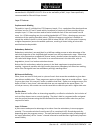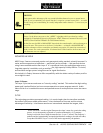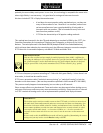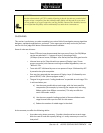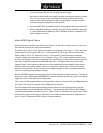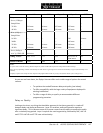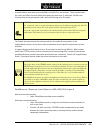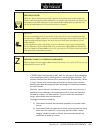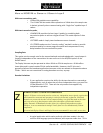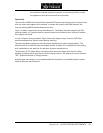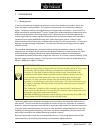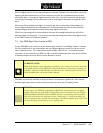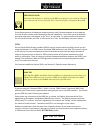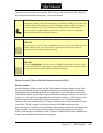
USER’S MANUAL
Section 6: AUDIO CODING REFERENCE 129
t
DEEP TECH NOTE!
While the "Stereo" modes keep the audio separate, the psychoacoustic model assumes the
listener will be hearing both audio channels (i.e. it assumes that audio from one channel may
mask audio on the other channel). For this reason the Mono/Dual mode is preferred when
discrete unrelated material is to be sent down the two channels.
h
HOT TIP!
The when transmitting in the stereo modes, the far end will not receive anything until both
transmission (i.e. ISDN) channels are connected and operating. The decoder will not will not
output anything until this happens. Any data drop outs could cause interruptions of both
audio channels.
If your application requires the ability for the two channels to come and go independently,
such as when they are from independent sites, you must use L3 Mono/Dual for transmit and
the far end must use L3 Mono/Dual receive. Or, you can use G.722. These are the only modes
that support fully independent operation.
Z
ZEPHYR CLASSIC VS. XSTREAM COMPARISON
While the Zephyr Classic supports Dual transmission in Layer-3 as well as G.722, it can only
independently receive in G.722.
• J‐STEREO(JointStereo)modeinAAC,AAC‐LD,andLayer‐3takesadvantage
oftheredundancythatisusuallypresentinstereoprogrammaterial.The
encoderswitchesfromdiscreteL/RtomatrixedL+R/L‐Rdynamically.When
inL+R/L‐Rmode,bitsareallocateddynamicallytothesetwobit‐streams
allowingmax
imumadvantagebetakenadvantageofredundancybetween
thetwochannels.
Sincethe"center‐channel"redundancy,presentinmoststereosources,is
exploitedtoouradvantage,thecompressionratioislowerandtherefore
thequalityishigher,formostmaterial.Forthisreasonwerecommend
usingJ‐stereoundermostcircumstances.
Thebigg
estexceptionswouldbe:
a) Caseswherematerialthathasbeenencodedinasurroundsound
format.
b) Caseswherefinalmixapprovalsofstereosourcematerialarebeing
madeoverthecodedlink.Inthiscase,decisionsabout"stereo
imaging"shouldbemadeindiscretestereowhereasoverallmix
reviewcanbemadeinJ‐stereo.



